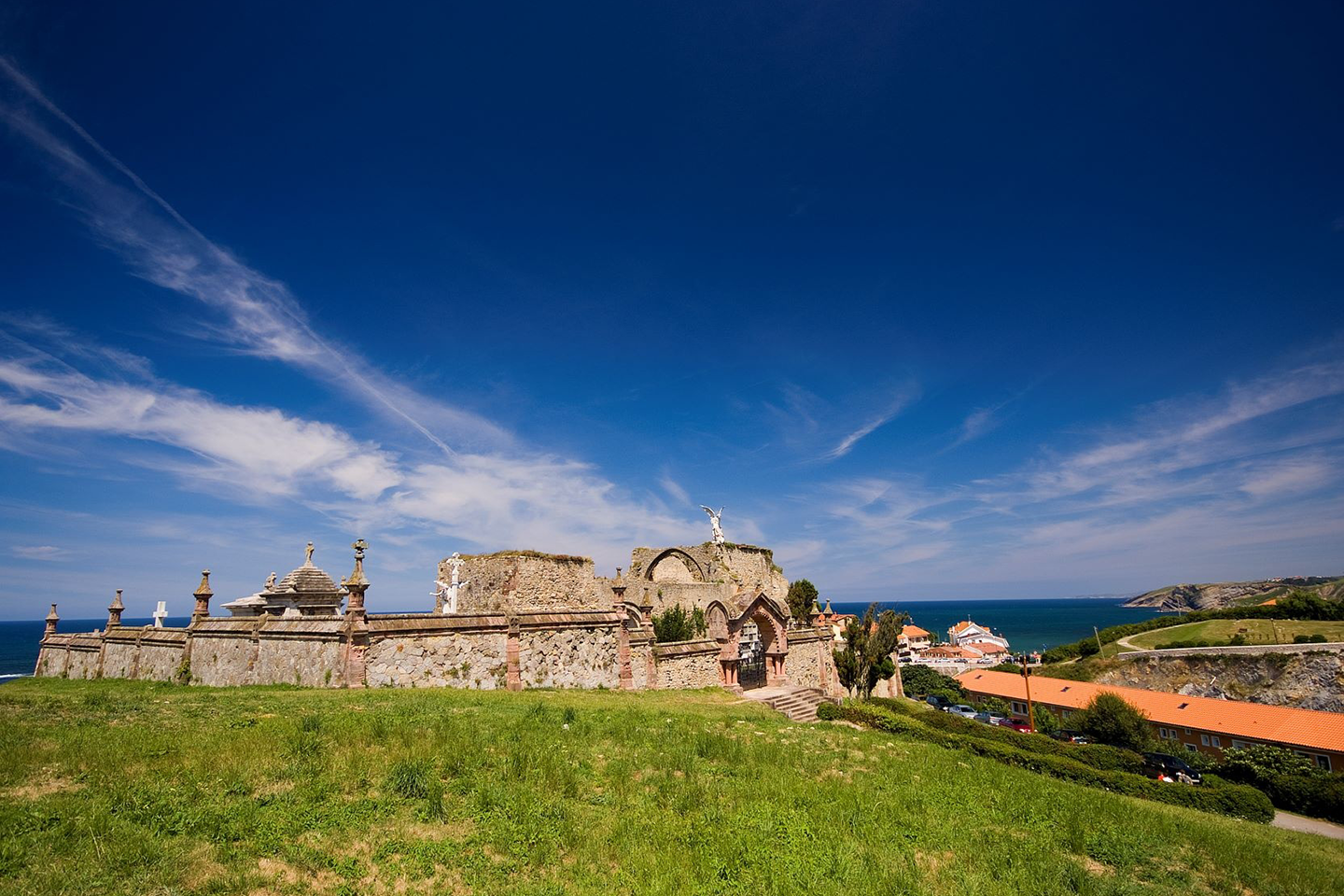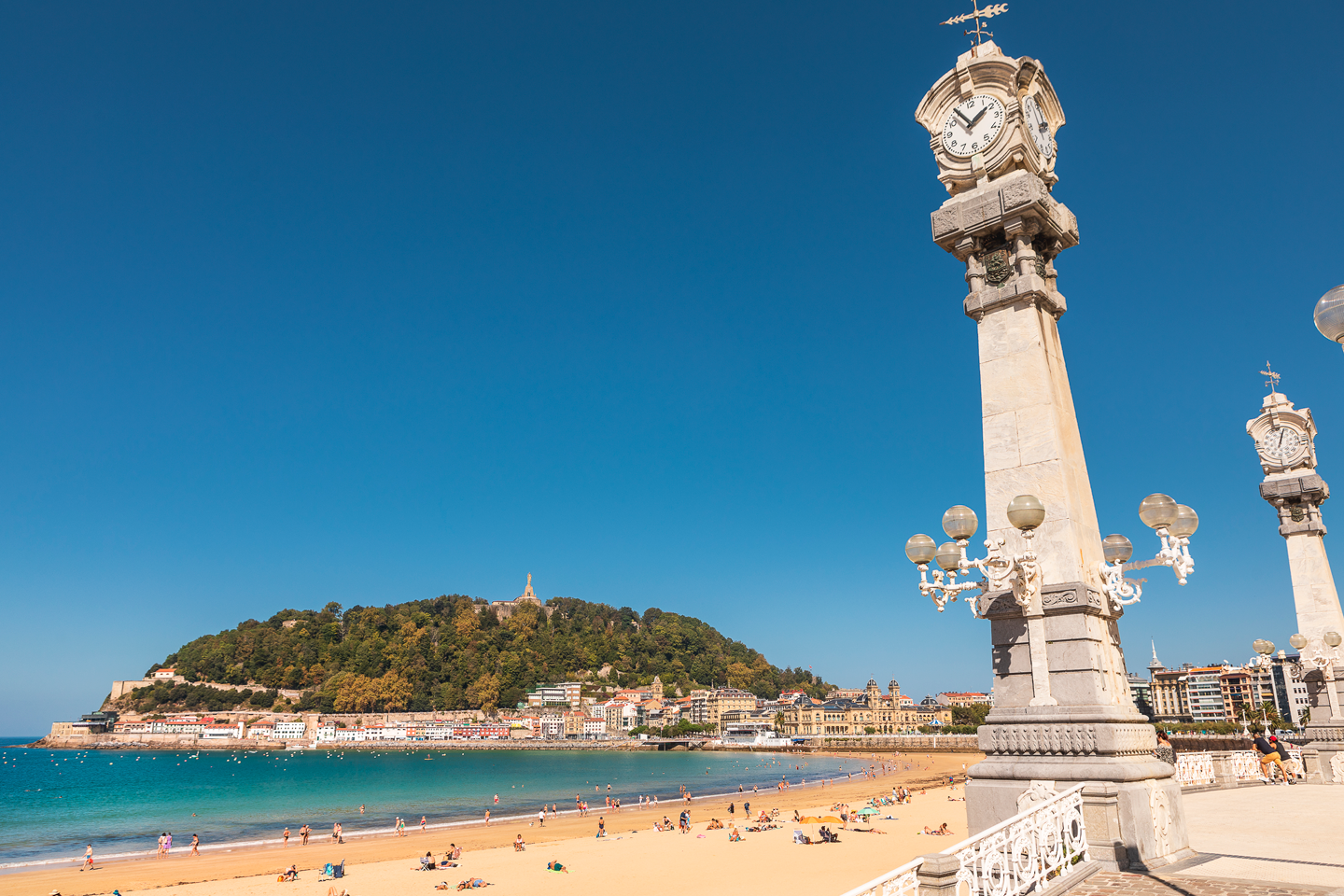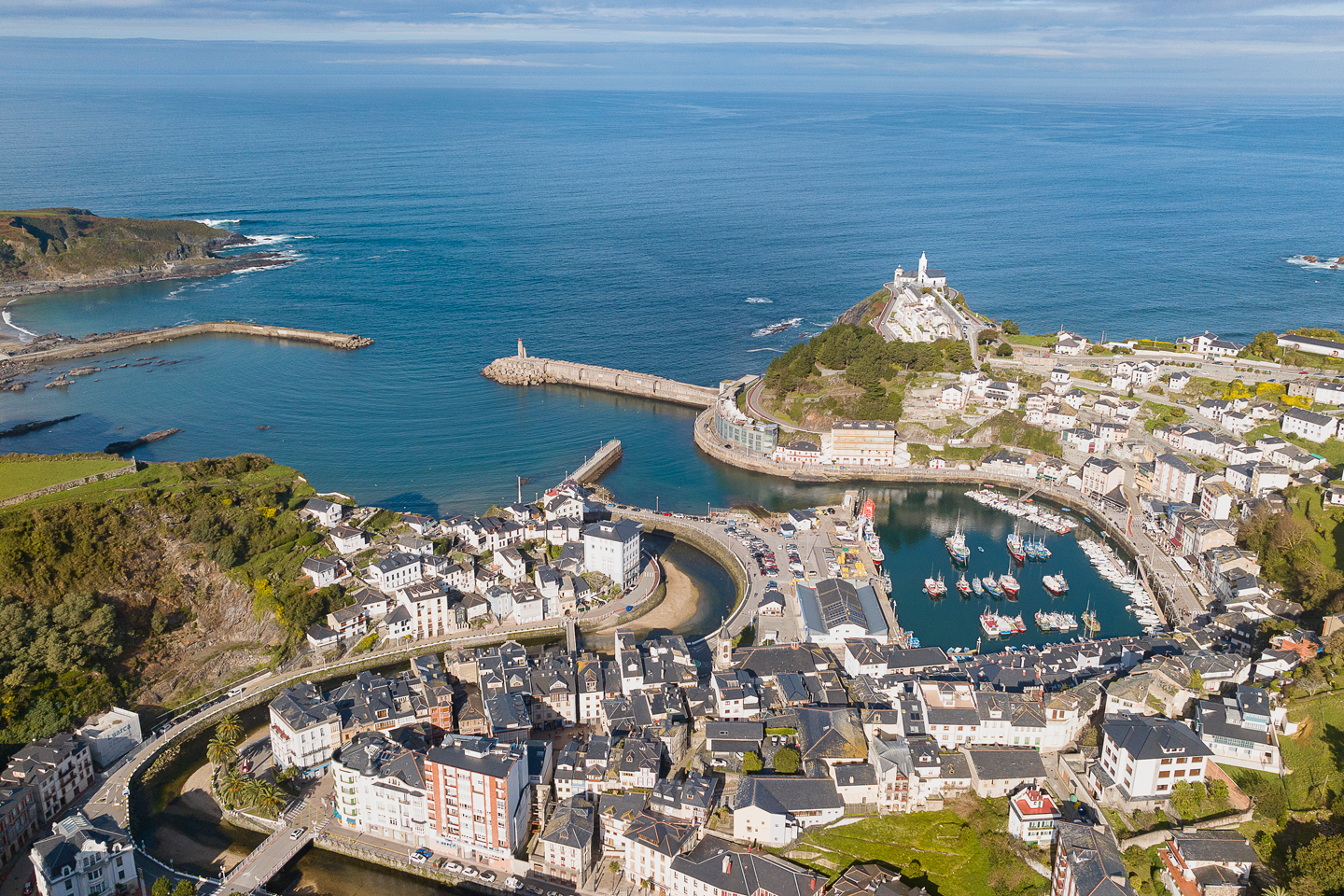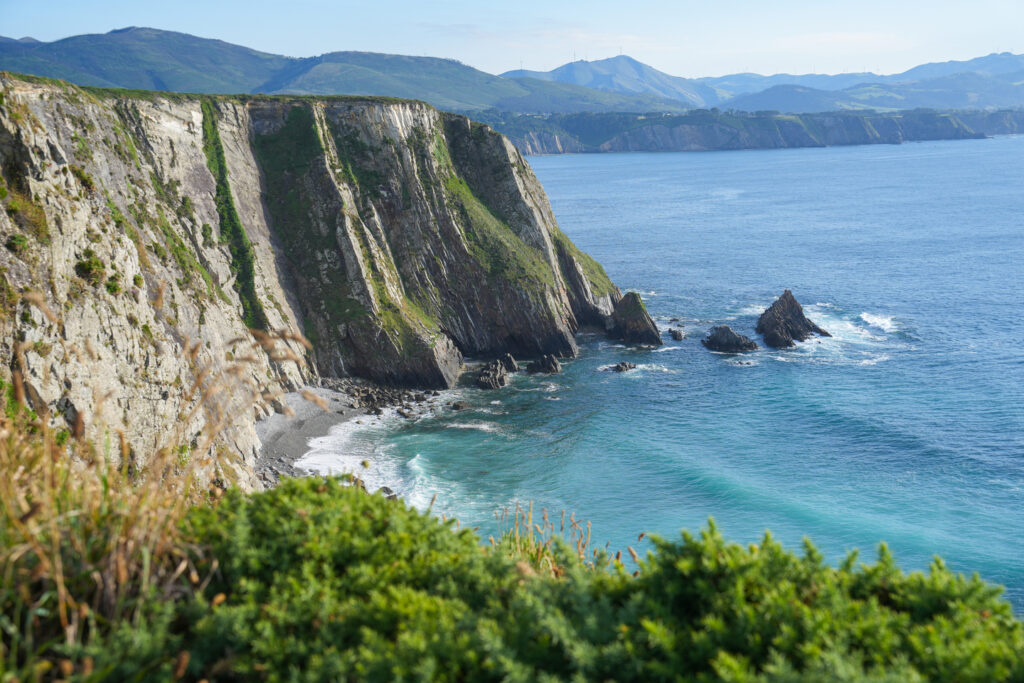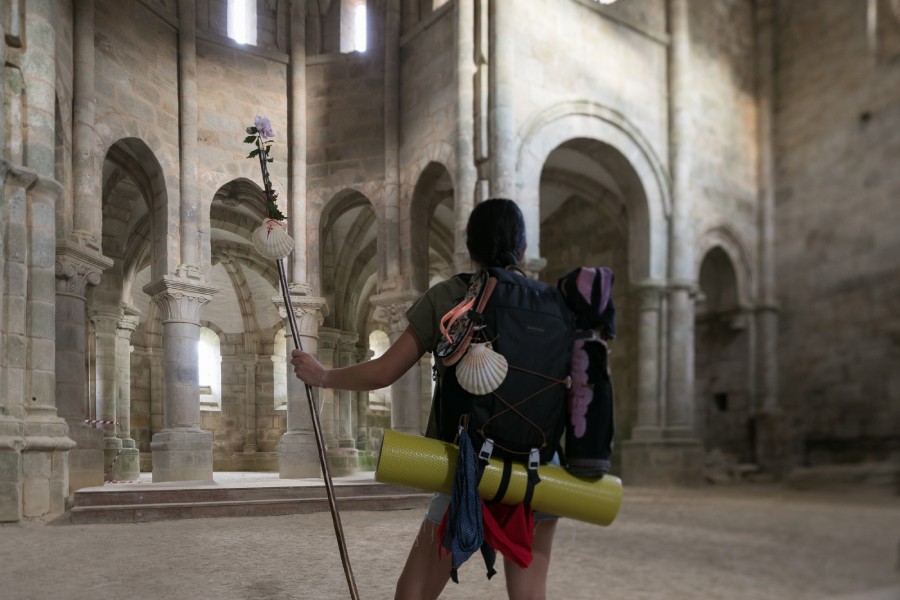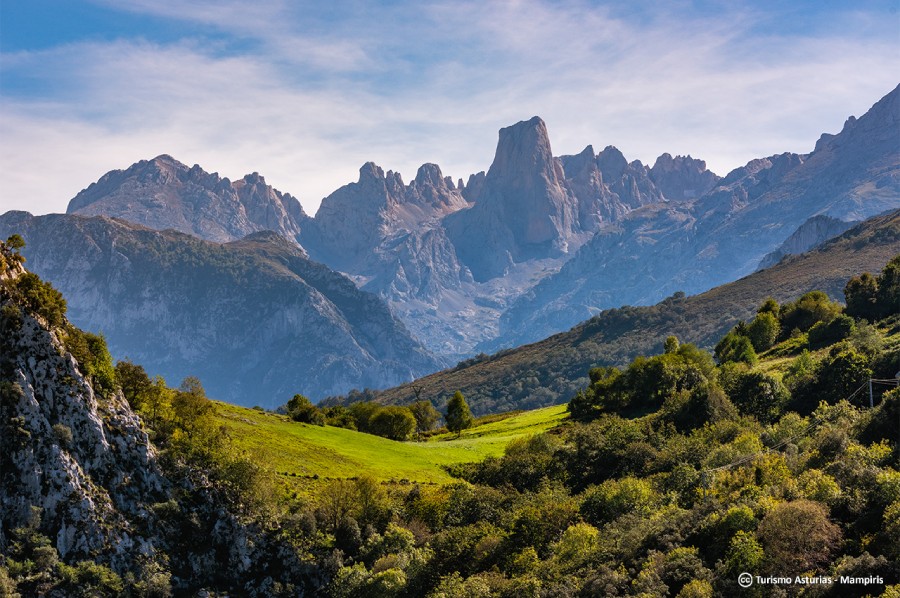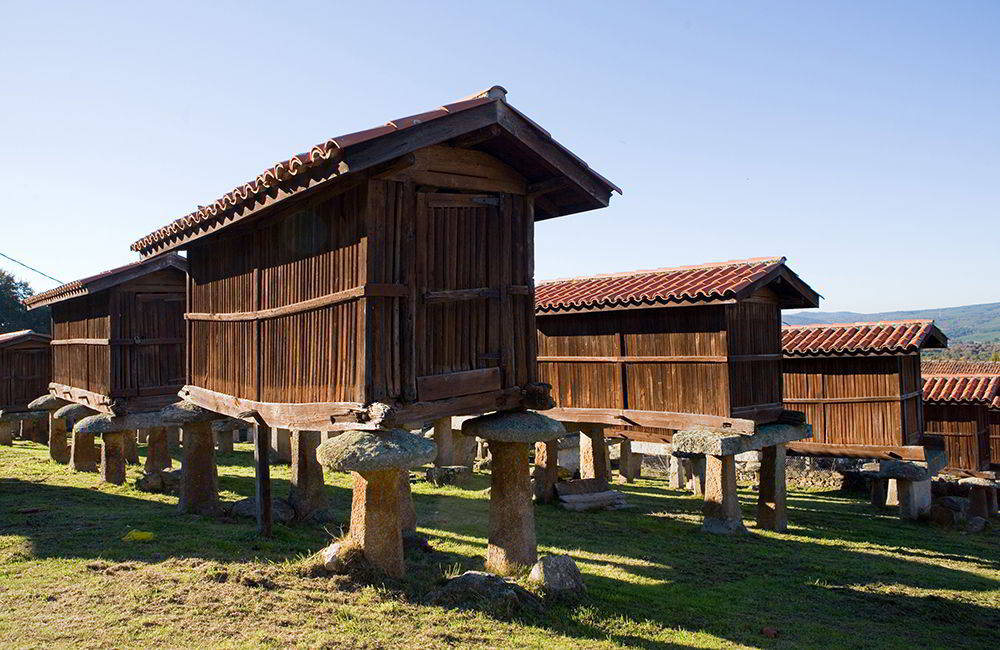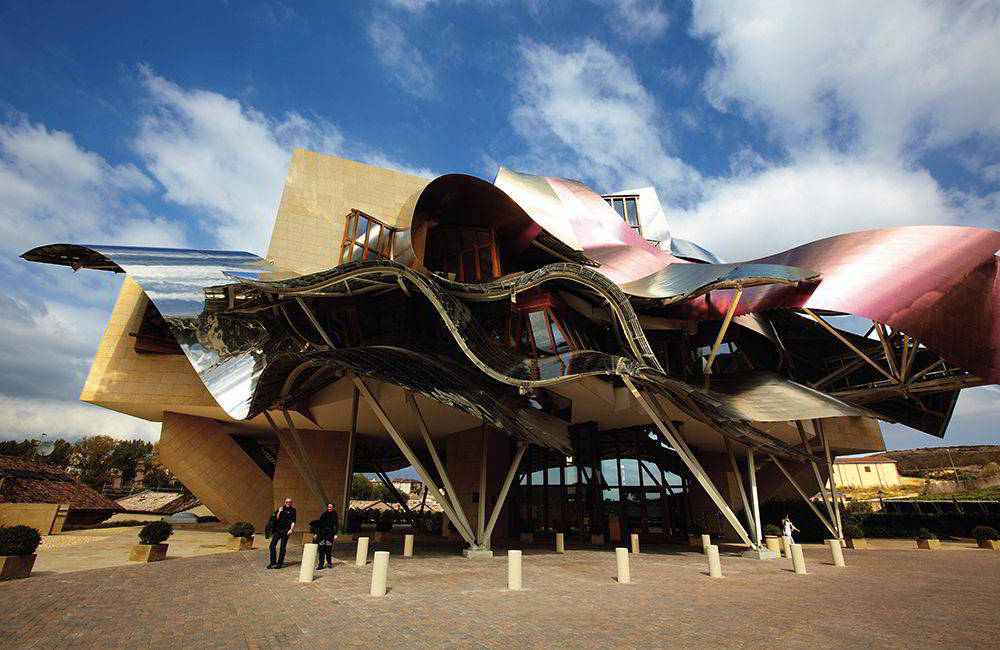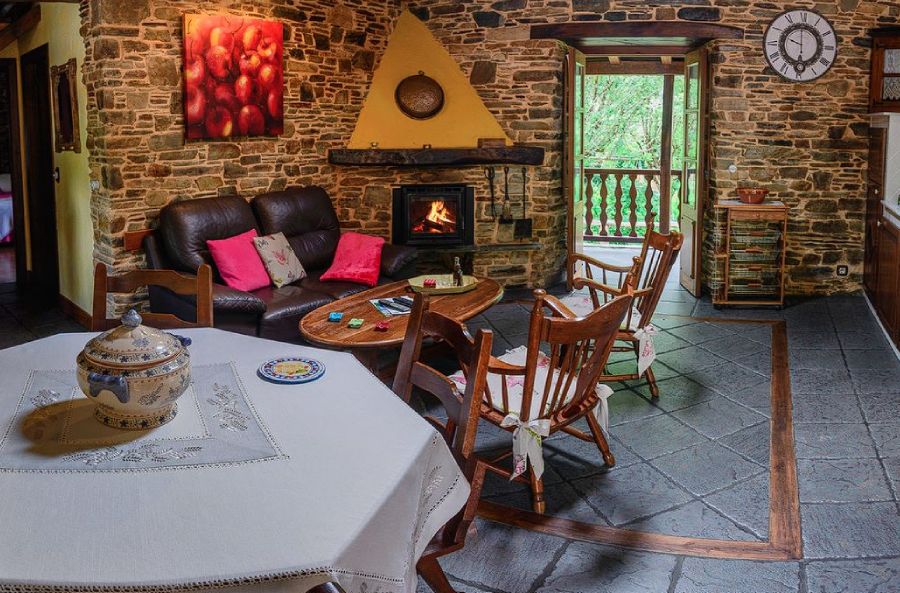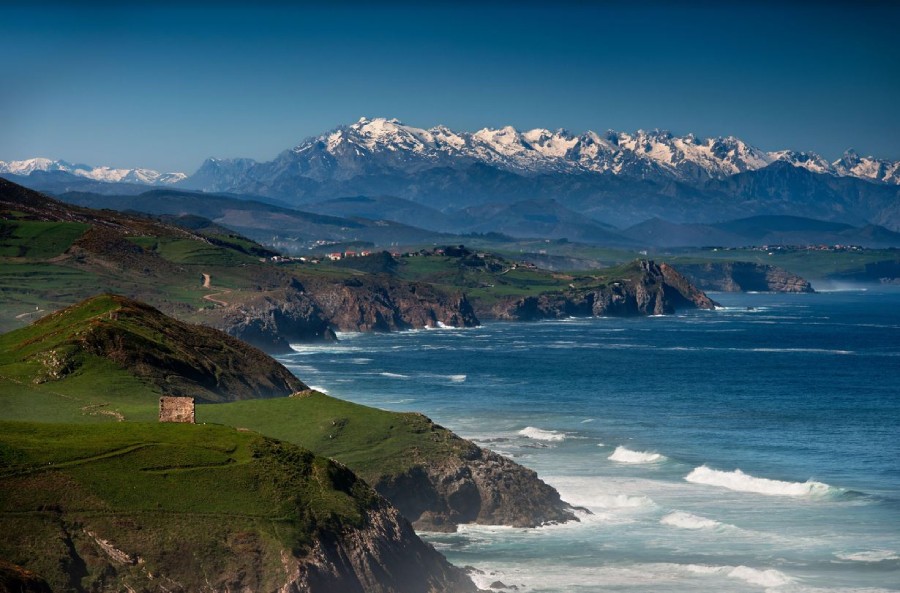The time has come for cemetery tourism, for strolling among tombs and visiting niches. In Green Spain, of course, there are charming cemeteries, centuries-old, monumental, romantic, modern, multi-award-winning, and even some with fictional vampires. Come with us… if you dare. All Saints‘ Day (’Halloween’ for the younger ones) is on the horizon.
Comillas Cemetery (Cantabria)
Where is it located?
In the Indian village of Comillas, one of the most curious and special villages in Cantabria and Green Spain. Comillas is a seafaring (and whaling) town that changed radically in the 19th century. Instead of humble fishermen’s houses, neo-gothic palaces, modernist houses (one of Gaudí’s few works outside Catalonia is located there) and a large university on top of a hill were built. The architect of it all was the Marquis of Comillas?
What’s so special about it?
It is the work of the Catalan architect Domènech i Montaner, contracted by the aforementioned Marquis. The artist took advantage of the ruins of a Gothic church, added some pinnacles and a disturbing detail: at the entrance the Exterminating Angel (sculpted by Josep Llimona in 1895) guards the cemetery, sword in hand.
A tomb not to be missed
One of the most famous tombs is one that never really existed and which, for decades, attracted many curious and mystery lovers to this cemetery. An urban legend has it that a supposedly cursed coffin passed through Spain, leaving a trail of victims in its wake. The fact, taken from a fantastic tale by Alfonso Sastre, put Comillas on the map as one of the stops of a fictitious vampire that some believed to be real.
Los Ingleses Cemetery, Donostia/San Sebastián (Basque Country)
Where is it located?
In a privileged green space: on Mount Urgull, one of the three icons that surround La Concha beach (the other two are the island of Santa Clara and Mount Igeldo). Urgull is the mound that protects the Parte Vieja, the highest concentration of pintxo bars in the whole city, and its ascent is a must (uphill) visit.
What is so special about it?
Unlike the immense and monumental cemetery of Polloe (the main one in the capital of Gipuzkoa) or other cemeteries in the Basque Country, the Cemetery of the English is a small, intimate and chaotic cemetery whose gravestones seem to sprout from the earth itself. There are also several tombs, commemorative plaques and even statues decapitated by the passage of time and oblivion. All of this is in keeping with the place where it is located, the northern slope of the hill, where the green mould, ivy and dampness devour everything. It is not unusual to come across the cats of a colony that inhabit the place and give the cemetery an even more ghostly atmosphere.
A tomb not to be missed
Paradoxically, the most remarkable tomb in the English cemetery is that of… a soldier from Navarre. The Cemetery of the English houses the tombs of the British who took part in the Carlist wars of the 19th century, but Marshal Manuel Antonio de Gurrea, from the Navarrese town of Olite, must have fought so hard that he earned himself a privileged tomb (a fenced monolith) surrounded by Englishmen.
Luarca Cemetery (Asturias)
Where is it located?
In a town located in the west of Asturias and with a geography as complex as it is fascinating, Luarca. There are many Luarcas: a seafaring one that is spread around its port; a bourgeois and Indian one settled in the upper plateau, Villar; one of meadows that is everywhere; another of leafy gardens that can only be found in the Forest-Garden of La Fonte Baxa and there is even a Luarca of cliffs and beaches.
What is so special about it?
There are few houses in Luarca or on the coast of Asturias whose views rival the panoramic views from this cemetery. The necropolis forms an idyllic ensemble with the chapel of the Virgen Blanca and the lighthouse. Cemeteries with sea views and the smell of saltpetre are not uncommon, but the one in Luarca, whose marble shines until it blinds you when the sun rises, is endowed with a special aura.
A tomb not to be missed
Amongst the tombs of illustrious Asturians and pantheons of wealthy Indianos, it is difficult to find the humble tomb of the town’s most beloved sons: ‘Here lie Carmen and Severo Ochoa. United for a lifetime by love. Now eternally linked by death’, reads the tombstone on the west balcony of the cemetery.
Cemetery of Fisterra (A Coruña)
Where is it located?
At the end of the world. And this is no joke. Or, at least, in what, for centuries, was believed to be the end of the known world. That is to say: Fisterra, Galicia, the place of pilgrimage for those who believe that the Way of St. James does not end in Santiago de Compostela but a little further on.
What is so special about it?
Fisterra is an idyllic fishing village, a cape, a lighthouse, a place considered mythical already in Roman times and a cemetery created by a renowned Galician architect (César Portela) with several awards behind him. Its main virtue is its location: a wild, isolated and undeveloped spot from where the deceased ‘enjoy’ unbeatable views over the sacred Pindo mountain.
A tomb not to be missed
It is difficult to single out one because such a beautiful and award-winning cemetery (it is one of the great works of mortuary architecture of our century) has hardly any inhabitants. And that is, precisely, another of the characteristics that make it special: the cemetery of Fisterra is almost deserted, inhabited only by the silence and solitu
